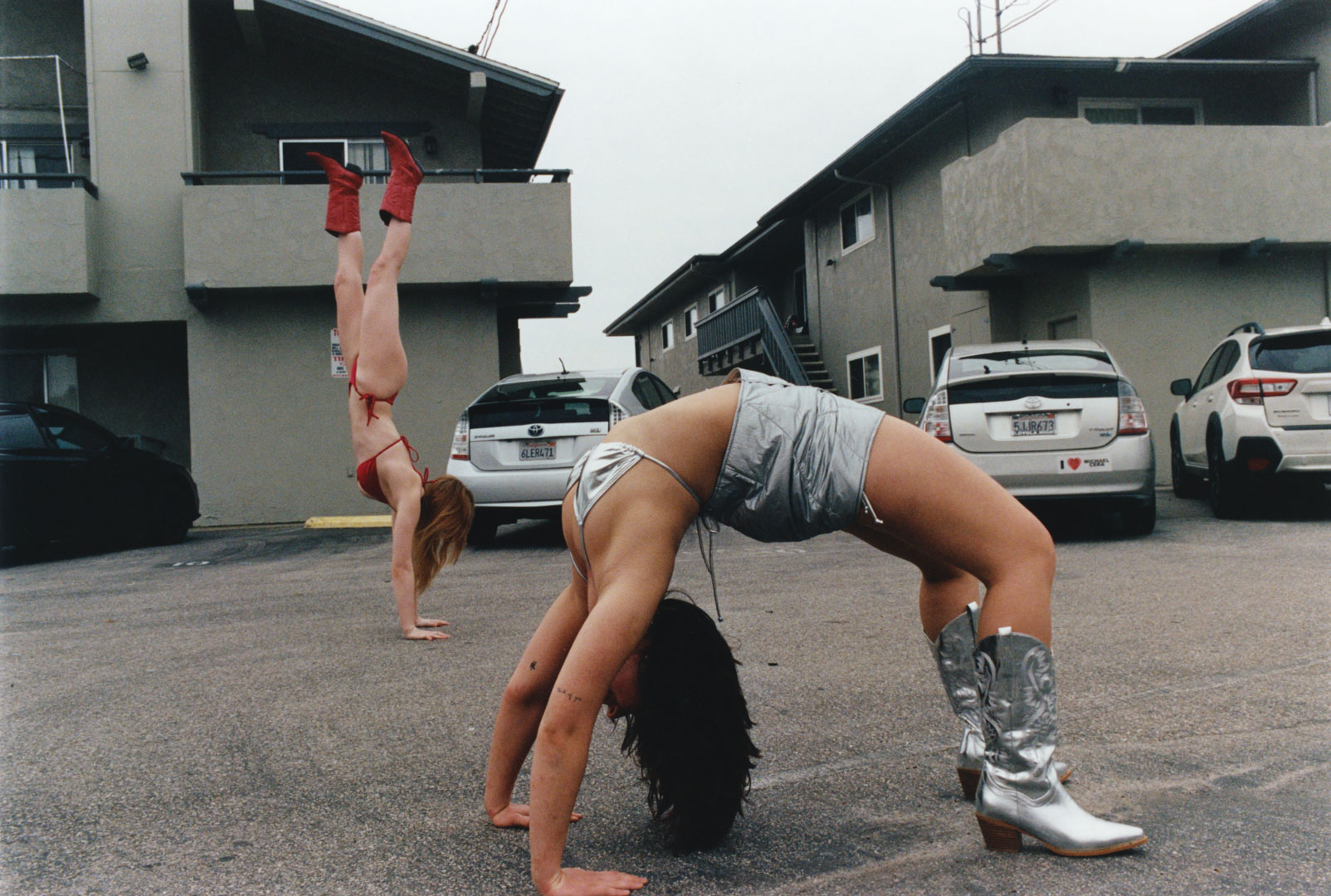GOLELA
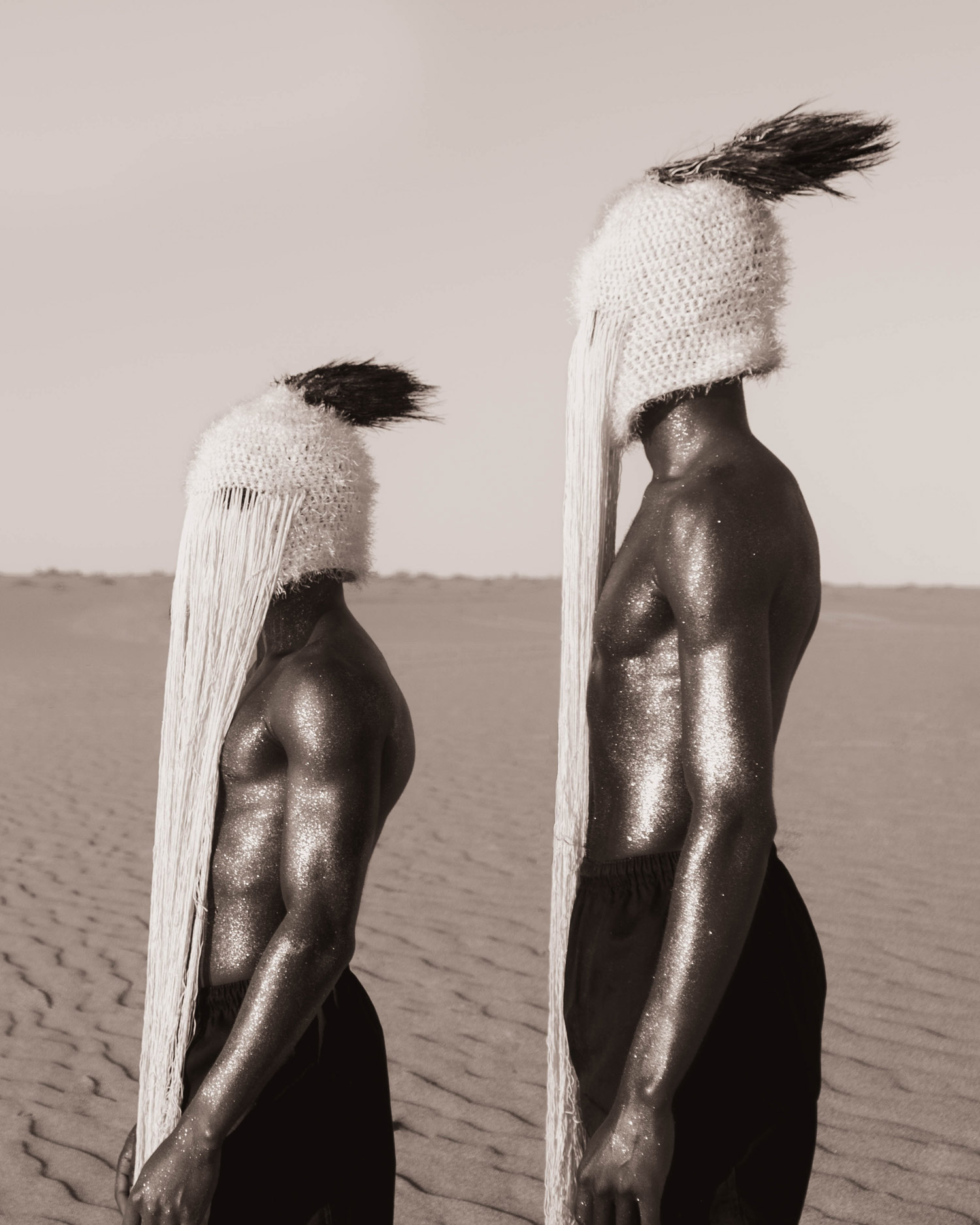
Ericke Tjiueza
Golela is the result of an art residency by Ericke Tjiueza in Oranjemund, a diamond mining town of 4,000 inhabitants situated in the extreme southwest of Namibia, on the northern bank of the Orange River mouth at the border with South Africa. According to Wikipedia, “the town was privately owned by De Beers until 2017, and thus governed by the diamond mining company’s administration. In 2011 the political administration was handed over to government which proclaimed it a town.”
Such a context, so unfamiliar to an European reader, made us wanting to know more, and this led to the following interview with Ericke.

What pushed you to create this photo series?
I was on a 1 month residency under the mentorship of renowned Namibian painter, Nicky Marias. Nicky introduced me to Oranjemund’s complex history and the challenges its people face as they try to adapt to life beyond mining. The town is currently trying to establish new industries besides mining because In 2019 the town faced a real threat of closing down when the mining activity was set to be complete. This scared all the residents and has created this tangible fear about what the future holds. While living there, I noticed escapism as a recurring theme, particularly through drinking.
Due to the temporary nature of mining, people are desperate to leave Oranjemund because they do not trust that they can build a stable life there anymore. The balaclavas were a uniform in the town, visible everywhere in restaurants and shops, which fascinated me—they were more than functional; they felt like symbols of protection, resilience, and a desire to remain unseen. GOLELA was my way of exploring these themes, blending the natural beauty of the region with the cultural and emotional layers of its people.

What is your connection with Oranjemund?
Living in Oranjemund gave me a chance to observe the town’s rhythms and its people closely. Black Namibian men are at the forefront of the mining activity, and something that stood out to me was how physically strong every single man seemed to be. At first, it felt strange, but then I understood why—they work incredibly hard. Their bodies endure immense pressure, yet they will likely never own a diamond. The same is true for their children or grandchildren. This struck me as deeply unfair, and I wanted to find a way to honor them.
The two Black men featured in GOLELA are not just models; they represent all the miners whose strength and labour are the foundation of an industry they are often excluded from benefiting fully. In my photography, their bodies are shining and embellished because they are the diamonds. Their Blackness, their manhood—these are what make so much of the beauty in the world possible. Through GOLELA, I wanted to tell them this, to recognise their value and remind them of their worth.


What does Golela mean?
In Southern African folklore, a ‘golela’ is a shadowy, malevolent figure that scares children who are bad. The masks in GOLELA draw on this myth, representing not only mystery and strength but also the resilience and adaptability of Oranjemund’s people. By using the ‘golela’ as a metaphor, the masks reflect both the challenges of life in isolation and the resourcefulness required to build a new identity and community.

Can you share some more information about the masks?
The masks are a central element of GOLELA, inspired by the miners’ balaclavas, which are both practical and symbolic in Oranjemund. The materials used include tin caps that I collected throughout Oranjemund—remnants of life and celebration. Some came from the aftermath of parties along the Orange River, while others were gathered from local ‘shebeens’ (liquor stores) and community members.
The recycled materials are meant to ground the masks in the community’s daily rhythms, reflecting both the joy and the challenges of life of this unique town. To me the masks embody identity, resilience and creativity, they were my way of turning ordinary objects into artistic expressions.
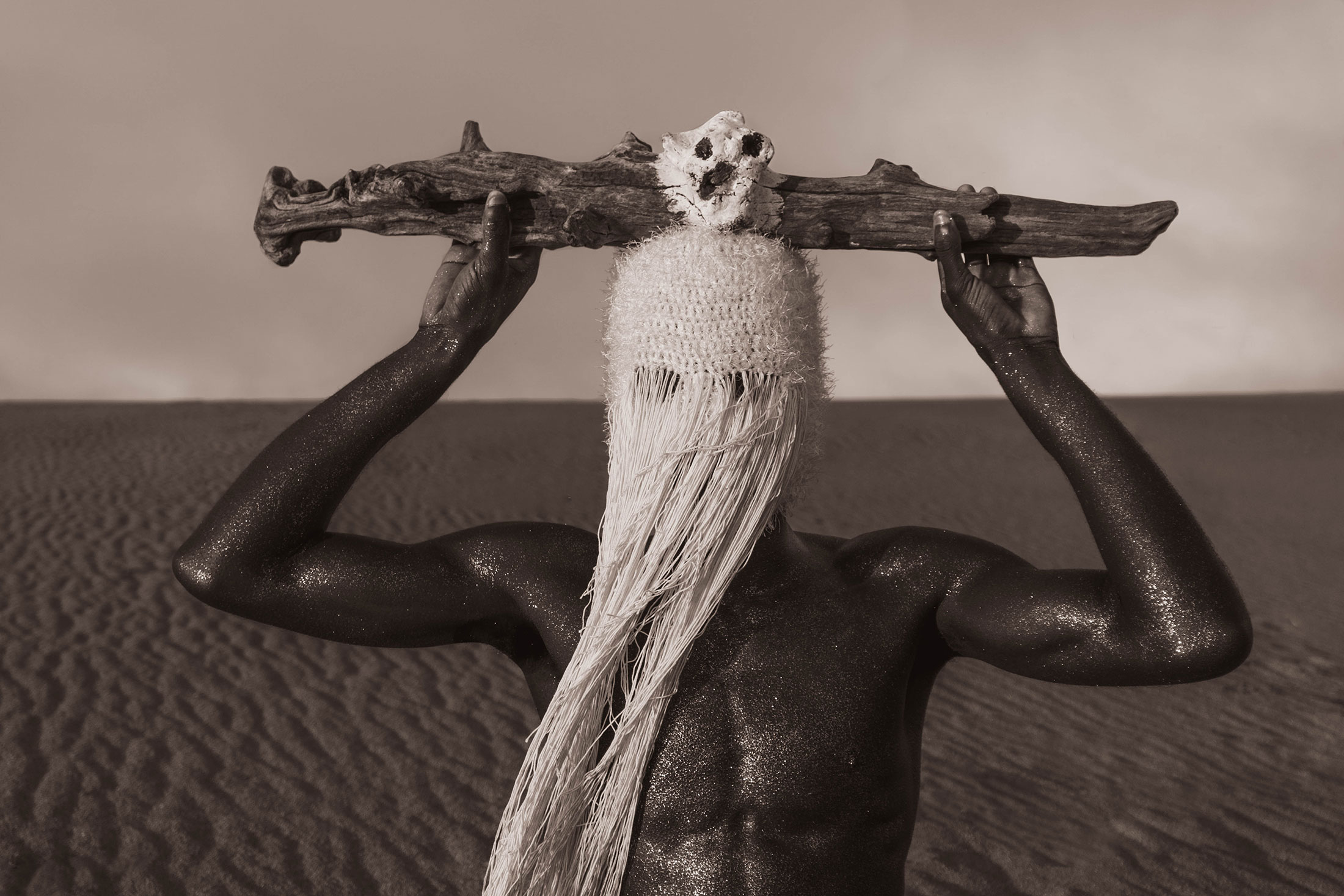
Who designed and created them? Is there a connection with local tradition?
I designed the masks and collaborated closely with 2 older local women at the Oranjemund Art Center where I was completing my 1 month residency. I drew inspiration for the face masks from traditional African masks. While not directly tied to African masks, my masks share similar symbolism. In most African traditions, masks are believed to possess spiritual pathos, serving as conduits between the physical and spiritual realms. African masks are used in ceremonial rituals to commune with ancestral spirits, protect against malevolent forces and to transmit cultural knowledge.
Similarly, while not imbued with supernatural powers, the balaclavas or ‘face masks’ worn by miners in Oranjemund hold spiritual resonances, acting as a shield against the harsh environmental conditions of the mines. They serve as a tangible reminder of the interconnectedness of the mining community, offering protection and solace in the face of adversity.


What inspired the shape of the wool ones, it’s wool right?
Yes, the masks are made from wool, a material chosen for its connection to crocheting, a common technique in Namibia. The tops of the masks include animal hair I found along the beach, which reminded me of birds. These masks became the “bird masks,” representing the idea of escapism. I asked myself: What is the quickest way out of nowhere and into bliss? For me, it’s the sky. The bird became my metaphor for freedom, my plane into the sky.
To add emotional depth, I stitched long strands of wool over the eyes of the masks, symbolising sadness. This came from thinking about the children of mine workers. Oranjemund is the only home they know and love, yet it is treated as a temporary place—a home they will inevitably have to leave once the mine closes down. That sense of intergenerational heartbreak struck me deeply, and I wanted to capture it in the masks. The bird, while a symbol of freedom, also carries the weight of loss. These are crying birds, reflecting both the yearning to escape and the sadness of leaving behind a home that is simultaneously beloved and fleeting.
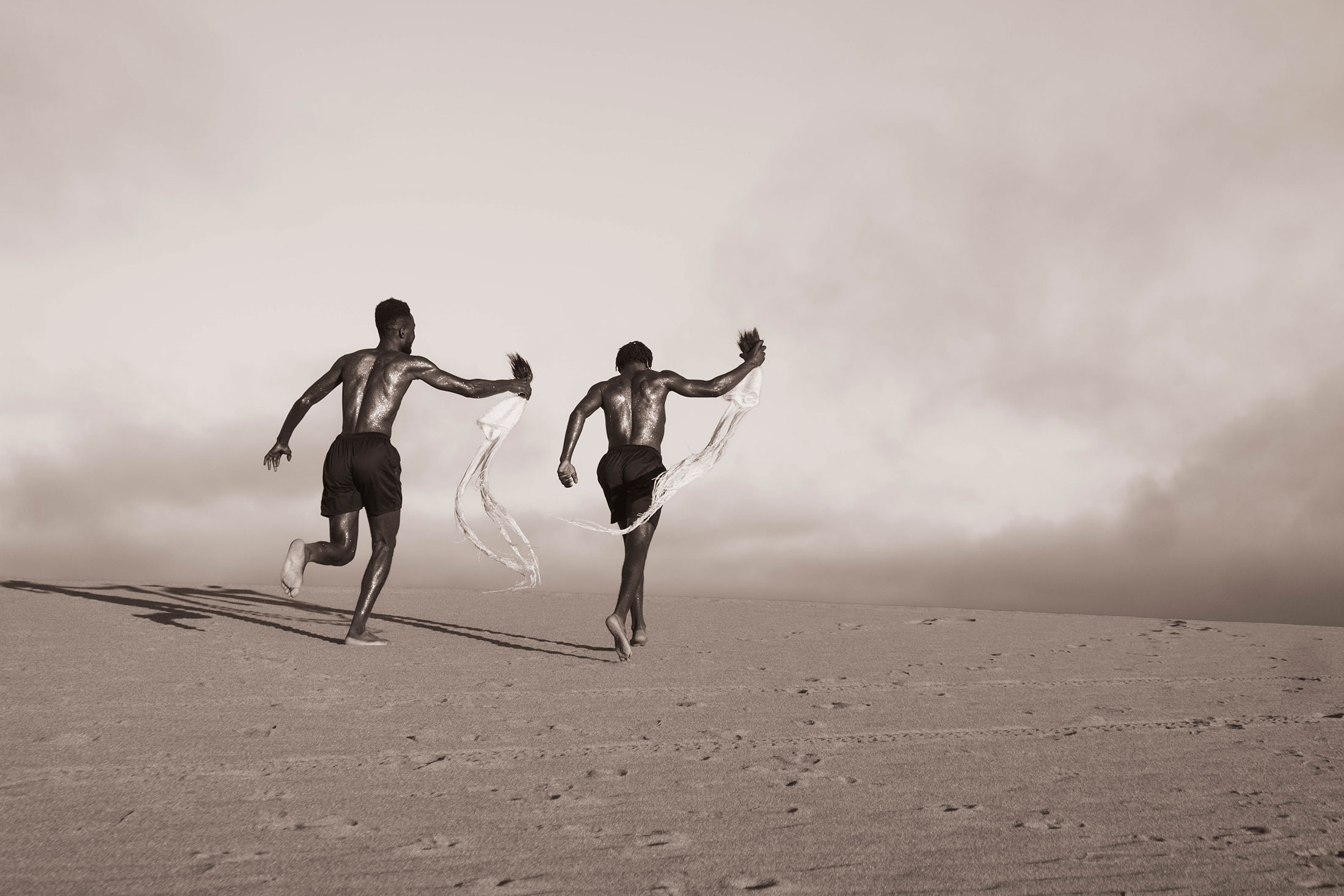
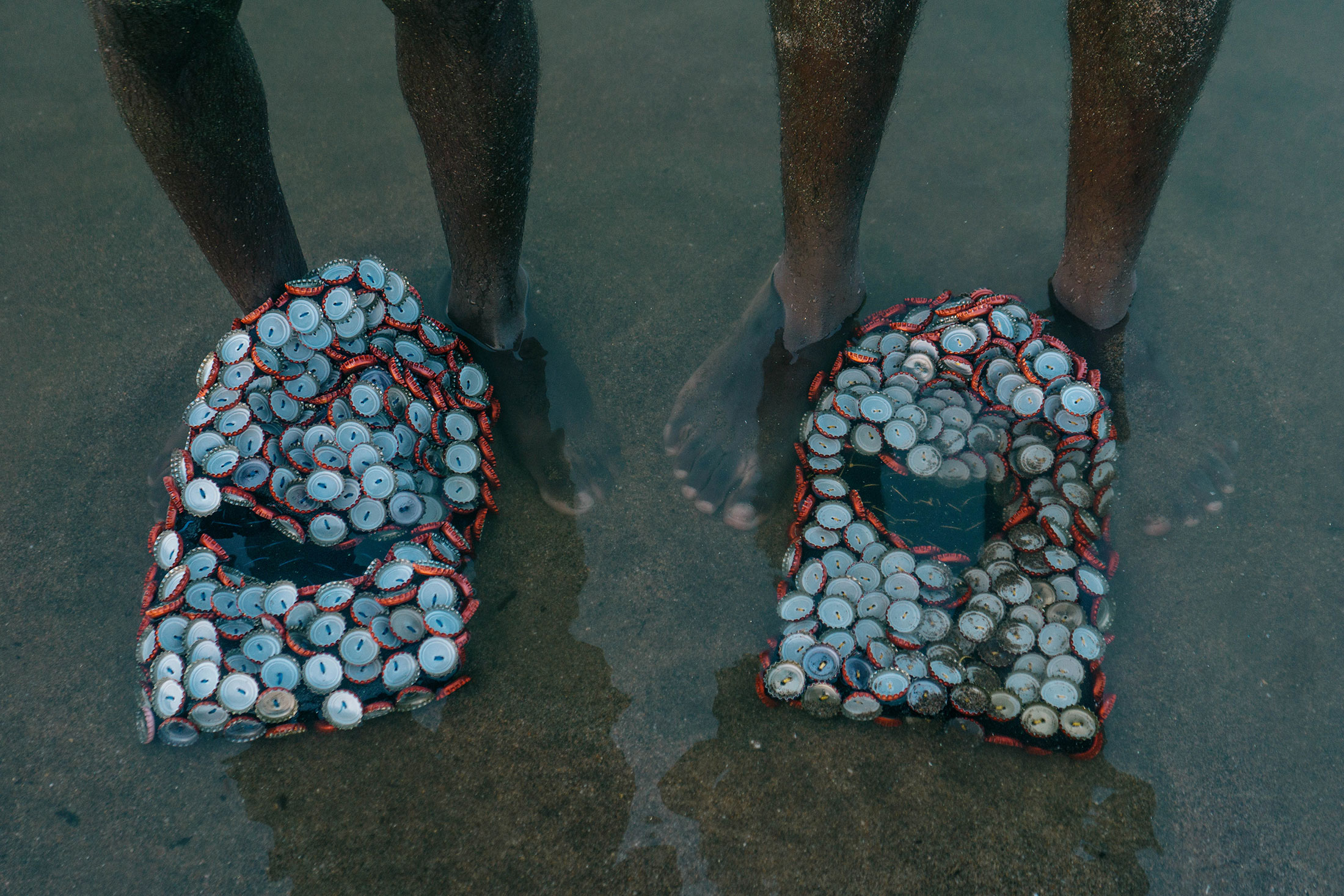

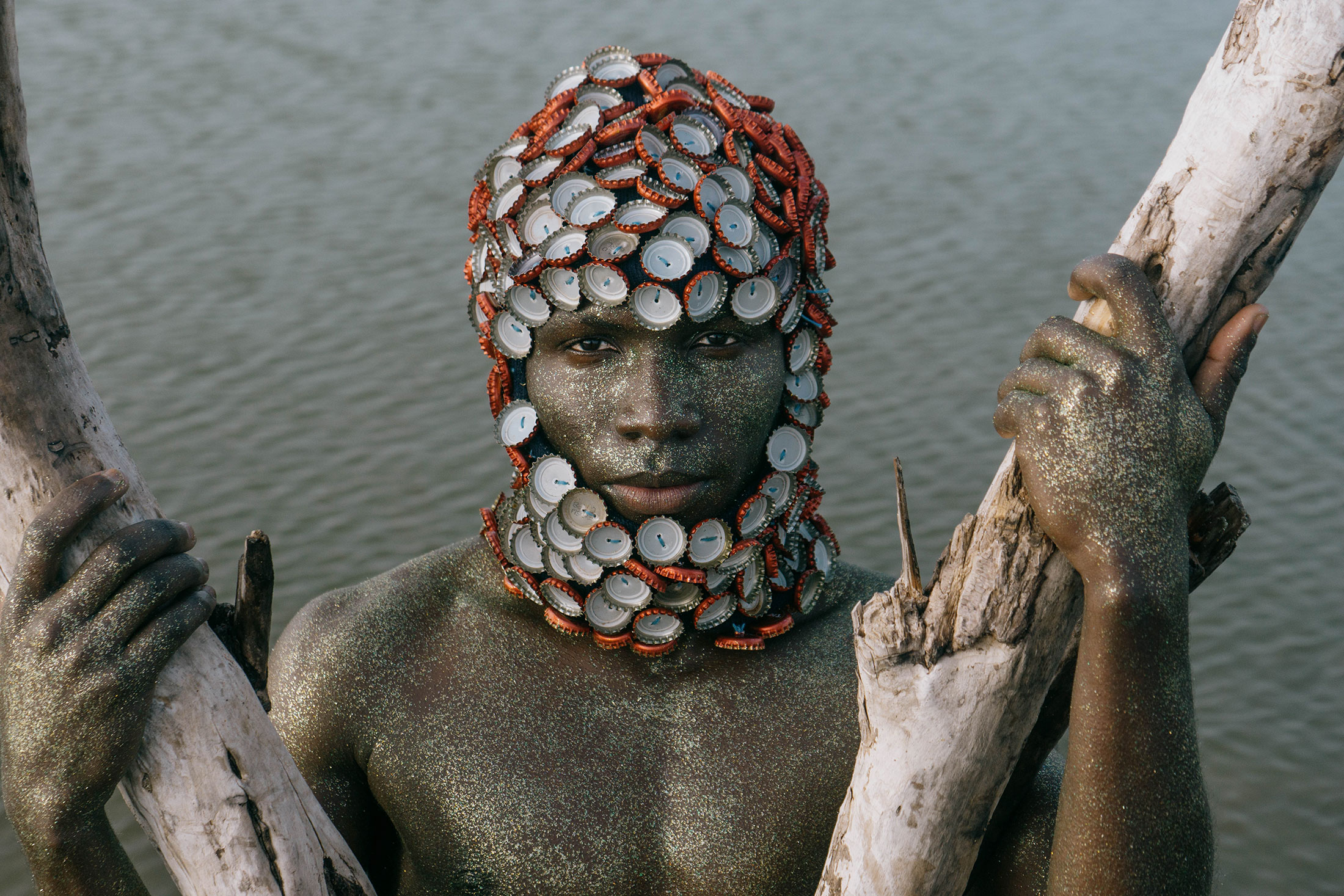

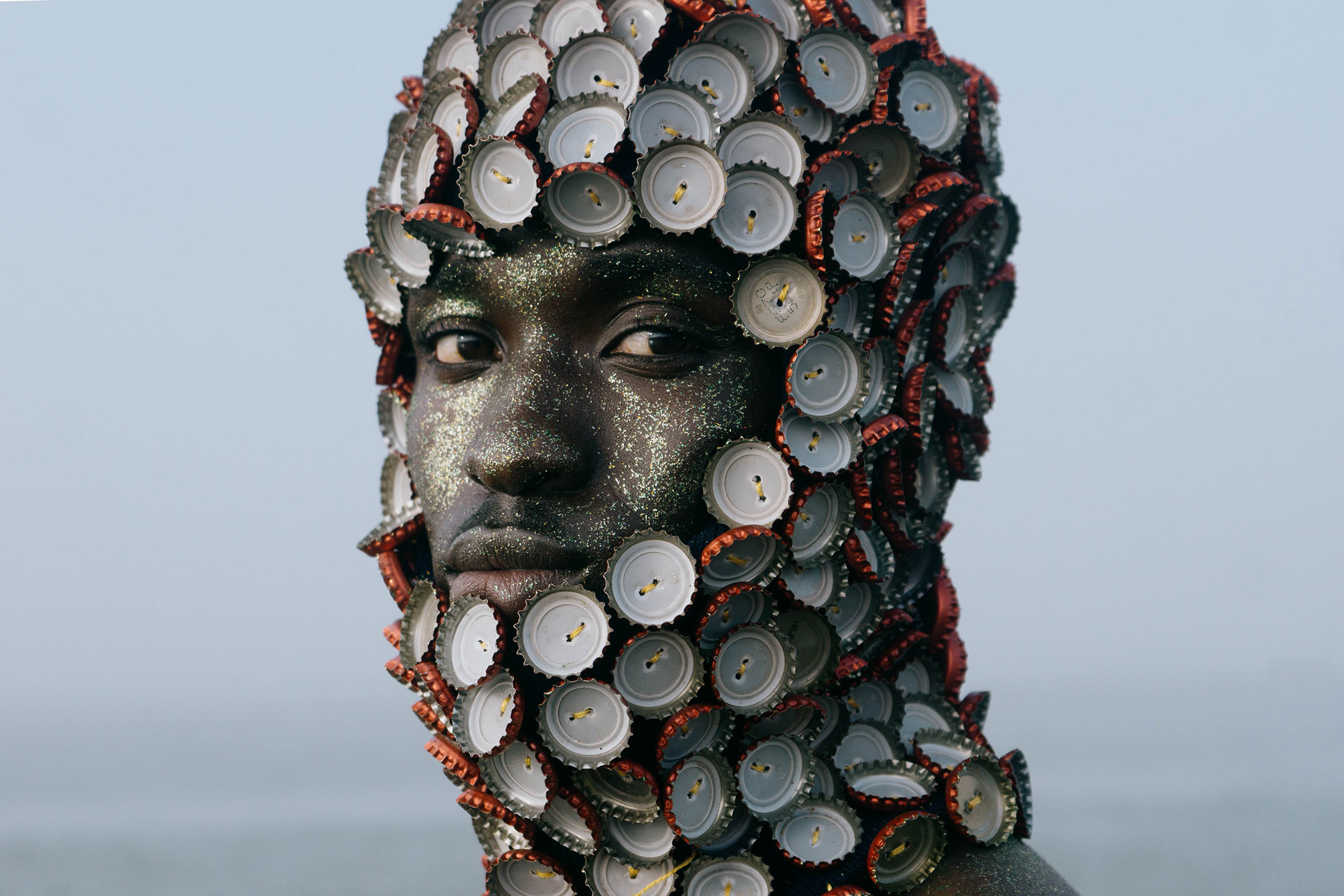


Ericke Tjiueza
Ericke Tjiueza is a photographer, filmmaker and visual artist hailing from Namibia. His work explores themes surrounding identity and is created with the intention of helping people develop more equitable ways of sharing experiences across various divides, be they race, generational, cultural or geographical.
Through human interest storytelling, Ericke explores the juxtaposition between the everyday and deeper societal realities, seeking to elevate the recognition of humanity above societal challenges such as poverty and discrimination.
He believes in the power of visual representation to showcase the richness and diversity of African life, providing global audiences with a window into the hope, passion, beauty, and joy.



